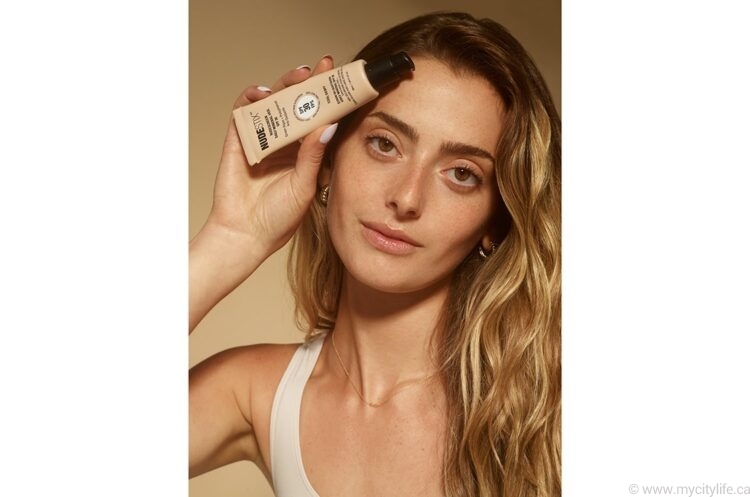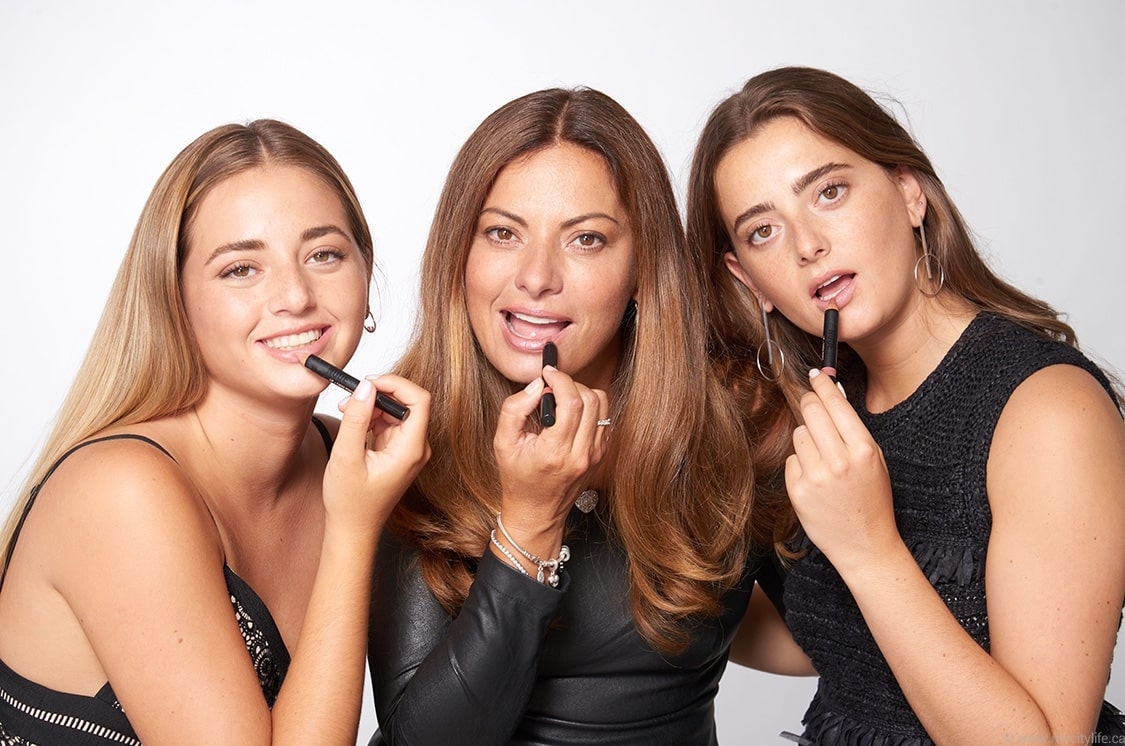Taylor Frankel: A Generational Passion For Beauty
Co-founder of Nudestix & Nudeskin Taylor Frankel Shares the Challenge of Creating a Sunscreen and How the Brand Is Staying Ahead of the Competition.
Taylor Frankel was just 17 years old when she started Nudestix with her mom, Jenny Frankel, who is the CEO of the brand, and her sister, Ally Frankel, who is currently in medical school. With their mom working as a product developer at MAC Cosmetics and later becoming the co-founder of Cover FX, the sisters were always surrounded by makeup. However, the duo struggled to find easy-to-use products with a natural finish. Thus, in 2014, Nudestix was born. Frankel and her team created multipurpose cream products that enhance your natural beauty.
Fast-forward to 2022, and cream products are all the rage and the no-makeup makeup look is trending. Since 2014, Nudestix has cultivated a community of over 500,000 Instagram followers and almost 30,000 followers on TikTok. In 2020, the brand launched its sister brand, Nudeskin, which sells clean, vegan and fuss-free skincare products. Frankel and her team collaborated with Dr. Jason Emer, a certified cosmetic dermatologist, to create skin-care products that will make the maximum impact with minimal effort. We had the chance to chat with Frankel about Nudeskin’s newest launch, the Nudescreen Daily Mineral Veil SPF 30 and about what the brand is doing to stay ahead of the competition.
Q: Were there any challenges in creating a sunscreen?
A: From the start, we knew we wanted to create a 100-per-cent mineral sunscreen. We knew this because we know that mineral versus chemical is so much safer, not only for the body but for the environment — in addition to that, for anyone who has eczema or irritated skin. My sister, Ally, for example, who’s also the co-founder, is allergic to all chemical sunscreens. We wanted to ensure that this product was safe for use for all skin types. So that was one of the most challenging things when developing sunscreen because, as most people know, mineral and/or physical blockers typically contain the mineral zinc oxide, which is known to have a white pigment. So, on medium to deeper complexions, it can often look chalky or provide a white cast on the skin. In order to ensure that we were masking the white pigment and creating a product that was suitable for all skin types, we really needed to create and source a formula where the zinc oxide wouldn’t leave as harsh a cast on the skin but also develop transparent tints, to ensure that, regardless of your skin tone, you can wear mineral sunscreen.
Q: What are some ingredients you wanted to include in the sunscreen and some ingredients you wanted to stay away from?
A: Seven ingredients that we wanted to ensure were formulated with our Nudescreen Daily Mineral Veil were, firstly, zinc oxide, because that’s the mineral that creates the physical blocker from UVA, UVB and blue light. Secondly, we wanted to add additional antioxidants and polyphenols to protect our skin from not only the UVA environmental stressors but also to ensure that we were treating, soothing and hydrating the skin simultaneously. So, in our product, you’ll find ingredients like green algae, passionflower, extra passionflower extract and purple tea. Ingredients that we knew we didn’t want in our product, firstly, were oils. We wanted to create an oil-free SPF to ensure that it never left a greasy or thick film on the skin. And secondly, because it’s a mineral sunscreen, we knew that we didn’t want to add any chemicals, like oxybenzone into our products. Oxybenzone is not only harmful to the body because of the way it absorbs into the skin and possibly the bloodstream, but it’s also harmful to our environment and coral reefs.
Q: What is Nudestix doing to remain ahead of the competition, and how will you continue to differentiate yourself from other brands?
A: In order to differentiate ourselves, we need to continue to stay true to our mission and our philosophy, which is multitasking, minimalist makeup for the modern-day woman on the go. I think, if our content, if our retail presence, if our community reflects that, that will continue to be differentiated. But I also think we need to ensure that we’re keeping up with trends. For example, if TikTok is one of the newest social platforms, make sure that we’re relevant, and we’re speaking to our community on that platform. In addition to that, to differentiate in terms of, like, sticking to our philosophy, it is also so important to innovate. So how are we expanding on our product pipeline? For example, we entered the category of SPF and disrupted that category. How are we entering and speaking to the category of complexion?
Q: A lot of brands haven’t transitioned to TikTok. How has jumping onto TikTok increased brand awareness?
A: TikTok has created an increase in social awareness through virality. What’s so unique about TikTok versus Instagram is that you’re reaching a whole new audience. On Instagram, you’re speaking to the same audience every single day, which leads to a fairly stagnant growth, versus TikTok, where you know you can still reach a larger community outside of your existing community quite organically. This can be through creating unique, engaging content through following trends, through engaging with certain TikTok communities, through hashtags, and it really allows brands who, don’t necessarily or can’t pay to play on Instagram the opportunity to grow a lot faster, and then again, drive people to their other platform.
Q: What factors have contributed to Nudestix’s success in cultivating a community?
A: Some factors that have allowed us to create a beautiful community are, first, authenticity. When we first launched Nudestix, being a founder was extremely client-facing, media-facing, really serving as the face of the brand to speak to our community directly every single day, whether that was through social media, whether that was through events in real life. In addition to that, we’re extremely in tune with what our community’s needs and wants are. So, we listen when they request new products, when they maybe suggest editing a formula or product. I think where some brands fail is when they don’t listen to their community directly and don’t act on the insights that they gain from their customers who are shopping for their products, who are engaged with their content every single day.


















































































